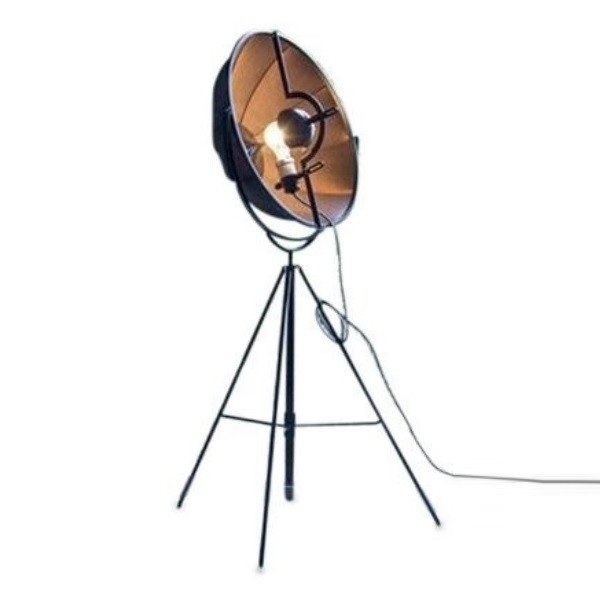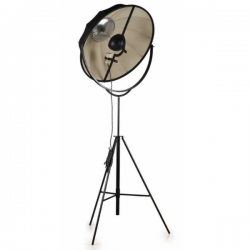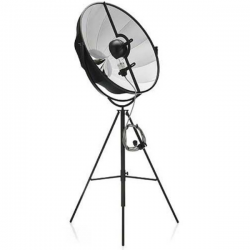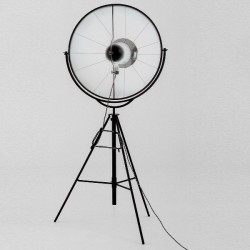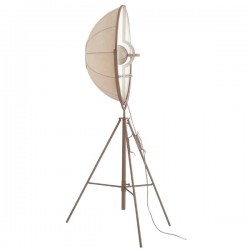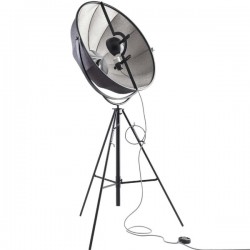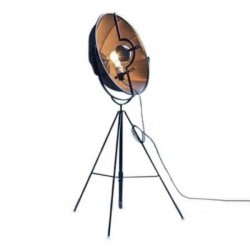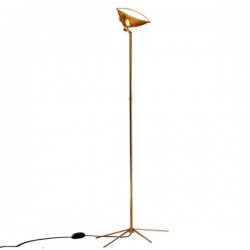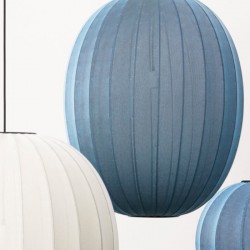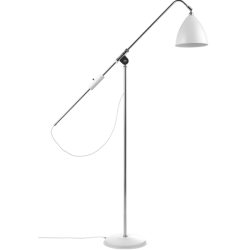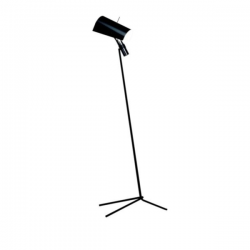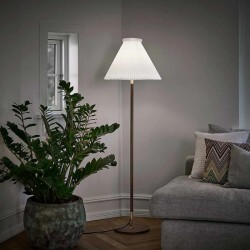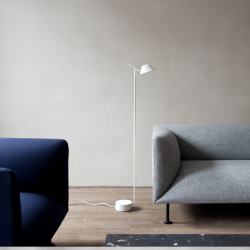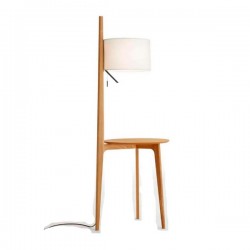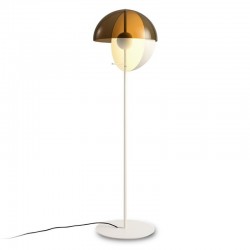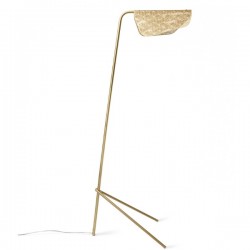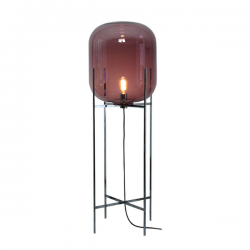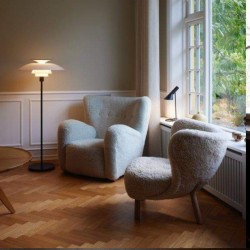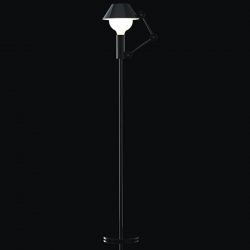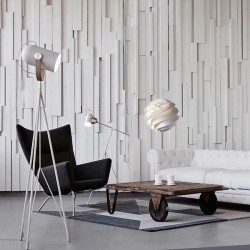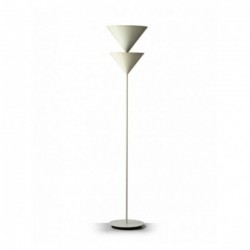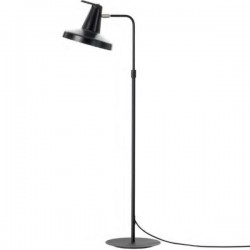Pallucco Fortuny Petite Rubelli Floor Lamp
Fortuny is considered a contemporary yet timeless icon even though it took its cue from experiments carried out in 1907 on a new indirect lighting system for the stage.
A camera tripod inspired the base with its adjustable central leg; for the shade Fortuny decided to turn the typical shade of that time upside down and also make it tilt. Pallucco is offering the Fortuny lamp in the original Nera (black) version and in the Moda (in Titanium and Beige)and Blanca (in white cotton) versions.
The lamp is white inside for these versions. Rubelli (gold linen and silk plissè) and Giudecca 805 with the original fabrics by the company Fortuny.
Floor lamp. Framework in profiled steel channel section,drawn flat bar and tubular steel. Lacquered epoxy powder finish black, white or titanium coloured. Swinging and adjustable in height. Incandescent bulb 500W, luminous flux 8400 IM , or one 300W bulb, luminous flux 4600 IM .
Bulbs life: 1000 hours. Socket E40, 230/110V.
- Specifications
Metal, cotton fabric
1 incandescent light bulb 300W E40 3630lm Dimmer
- Size Description
Height: 168/210cm
Diameter: 65cm
Diameter Diffuser: 73cm
-
Mariano Fortuny
In 1871, Mariano Fortuny y Madrazo was born in Granada, Spain. His early childhood was divided between Rome, where his father had a studio and Capricio near Naples. After his father's death in 1874, his family left for Paris to join their uncle. His father and grandfather were both celebrated artists. Mariano inherited artistic skills and also worked in printing, drawing and chemistry. His mother was a Spanish beauty whose wealth had endowed the famous Prado Museum in Madrid, Spain. Mariano studied painting until the age of 18, and was then introduced to Parisian society. After a while, his mother moved the family to Venice. He bought a palazzo and turned it into an enormous studio. Mariano produced both easel paintings and frescoes, was a print-maker and sculptor. In 1897, he was awarded the gold medal at the Munich International Festival of Art for his painting The Flower Girls. He exhibited his paintings every year at the Venice Biennale until his death.


 EUR
EUR

